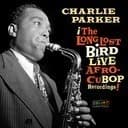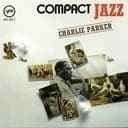The G♭ Bebop Dominant Scale in Jazz Context
The G♭ bebop dominant scale follows the interval formula of 2-2-1-2-2-1-1-1 semitones, producing the notes G♭, A♭, B♭, C♭, D♭, E♭, F♭, and F. The chromatic passing tone (F natural) creates an eight-note structure ensuring chord tones (G♭, B♭, D♭, F♭) fall on strong beats during eighth-note improvisation. This rhythmic alignment, developed by bebop pioneers, revolutionized jazz improvisation by maintaining harmonic emphasis during rapid scalar passages—a technique essential to authentic bebop language.
Application in Jazz Standards
The G♭ bebop dominant scale serves as a primary improvisational tool over G♭7 (G♭ dominant seventh) chords in jazz contexts. In ii-V-I progressions resolving to C♭ major (Abm7-G♭7-C♭maj7), the G♭ bebop dominant scale provides smooth voice leading and characteristic bebop chromaticism. The scale appears in numerous jazz standards that modulate through flat keys, making it indispensable for jazz pianists navigating complex harmonic progressions.
Piano Practice and Technical Development
For effective piano practice of the G♭ bebop dominant scale, use consistent fingering: right hand ascending from G♭: 2(G♭)-3(A♭)-1(B♭)- 2(C♭)-3(D♭)-1(E♭)-2(F♭)-3(F)-4(G♭). Set your metronome to 60-80 BPM and practice in strict eighth notes, emphasizing chord tones (G♭, B♭, D♭, F♭) on downbeats. Progress to various rhythmic groupings and practice through different octaves to develop facility in flat keys.
Harmonic Applications
In the key of C♭ major, the progression Abm7-G♭7-C♭maj7 provides perfect context for the G♭ bebop dominant scale: play A♭ Dorian over Abm7, switch to G♭ bebop dominant over G♭7, and resolve to C♭ major. The scale also works in modal contexts where G♭7 harmony is sustained, allowing extended exploration of bebop chromaticism.
Enharmonic Relationships
The G♭ bebop dominant scale is enharmonically equivalent to the F# bebop dominant scale, sharing identical pitches but notated differently based on harmonic context. The G♭ bebop major scale serves as the parallel bebop scale. Jazz pianists develop fluency with multiple G♭ dominant scale options—bebop dominant, Mixolydian, altered— learning to choose based on harmonic context.





